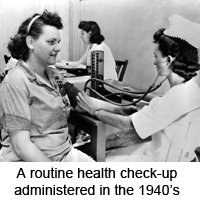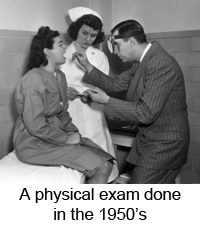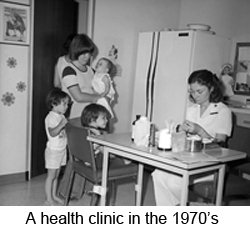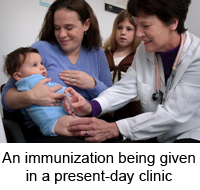It's a New Day in Public Health.
The Florida Department of Health works to protect, promote, and improve the health of all people in Florida through integrated state, county, and community efforts.
Background and Overview
Florida Department of Health in Santa Rosa County
- 850-983-5200
- PIO.CHD57@flhealth.gov
-
Mailing Address
P.O. Box 929
Milton, FL 32572-0929
 The first Public Health Department in Florida was established in Escambia County in the late 1800's in response to a Yellow Fever out-break. Past public health efforts have wiped out or brought under control such deadly diseases as polio, malaria, yellow fever, and smallpox.
The first Public Health Department in Florida was established in Escambia County in the late 1800's in response to a Yellow Fever out-break. Past public health efforts have wiped out or brought under control such deadly diseases as polio, malaria, yellow fever, and smallpox.
The Florida Department of Health in Santa Rosa County was started in 1941 with a staff of eight under the direction of Dr. Stebbins of Pensacola, who served as part-time director here and was also director in Escambia County.  The health department provided a public health program that placed emphasis on nutrition, midwifery, immunizations, environmental health and Venereal Disease (VD), now referred to as Sexually Transmitted Diseases (STDs).
The health department provided a public health program that placed emphasis on nutrition, midwifery, immunizations, environmental health and Venereal Disease (VD), now referred to as Sexually Transmitted Diseases (STDs).
The health department was originally located in the County Court House and was moved to the Butler Building on Riverside in 1950. During the 50's the health department relocated to two other locations, the Post Office Annex and the Dalco Cobb home on Canal Street. In 1960, construction began on a new facility for the health  department on Stewart Street. Today this building still houses the health department, although it has received four additions, the last one being in 1996.
department on Stewart Street. Today this building still houses the health department, although it has received four additions, the last one being in 1996.
In the early 70's a second office was opened in Gulf Breeze. The health department operated out of this facility until the Midway clinic was opened in 1998.
What does the Health Department do for Santa Rosa County?
 We monitor health status to identify and solve community health problems.
We monitor health status to identify and solve community health problems.- We provide an assessment of the county's health status.
- We help prevent the spread of infectious diseases.
- We assist in protecting against environmental hazards.
- We build community partnerships to leverage resources and improve overall health outcomes.
- We respond to disasters such as hurricanes, and help the community recover.
- We provide education to improve health and prevent injuries.
- We assure quality and availability of health care services.
- We provide limited health care services such as family planning, physical exams and immunizations.



Connect with DOH